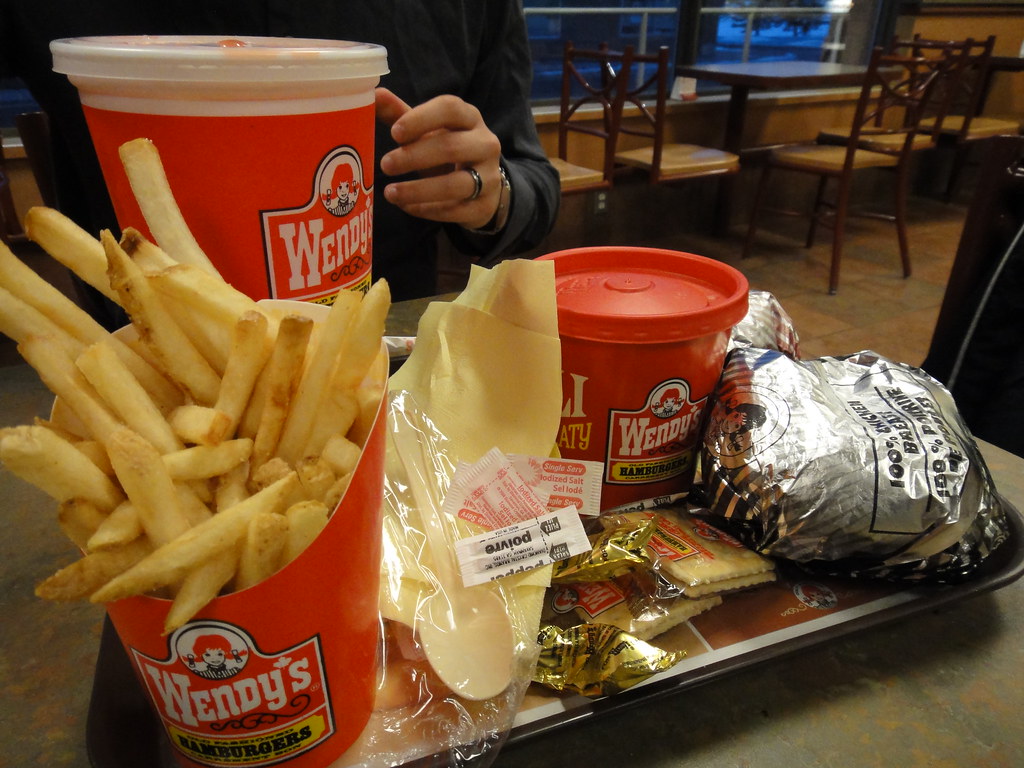TL;DR:
- Wendy’s will spend $20M on digital menus enabling demand-based pricing by 2025, likely during peak lunch times
- Other industries have adopted surge pricing despite initial backlash, setting a precedent Wendy’s is banking on
- Wendy’s argues it “smooths out” demand and drives traffic to slower periods, but customers may be outraged
- If Wendy’s surge pricing experiment succeeds, competitors with digital menus may quickly follow suit though short-term customer anger
If case you haven’t seen the headlines yet – Wendy’s plans to introduce demand-based dynamic or surge pricing at certain busy times of day. They made the announcement on their latest earnings call. As a fast food fan, the thought of paying extra for your Baconator at lunch rush may leave a bad taste in your mouth. But with other industries increasingly adopting the controversial practice, is the era of cheap, predictable fast food pricing coming to an end?
5 Reasons Why Wendy’s Surge Pricing Model Could Be A Success
Let’s count down the reasons why Wendy’s surge pricing model could spread across the industry – and why furious customers will likely still foot the bill.
Other successful industries have set a precedent
From Uber’s infamous surge pricing to holiday airline price hikes, complex algorithms are already sending prices soaring. Dynamic pricing has become common across industries. Though heavily criticized at first, customers have grown to accept – or at least tolerate – surge pricing in cases where demand dramatically outpaces supply.
While markups on frosty treats may seem fundamentally unfair, Wendy’s is betting that this precedent still applies to fast food. If surge pricing works for them, it likely paves the way for competitors like McDonald’s and Burger King to follow.
Digital menus enable easy changes
In the past, physically printing different menus for different times of day would have been a logistical and financial headache not worth the effort. But with Wendy’s investing over $20 million in slick digital menu boards scheduled for nationwide installation by 2025, they can easily display dynamic pricing updates. Competitors are sure to take notice of these efficient, AI-powered menus. Expect to see surge pricing pop up on menus industry-wide as digital boards expand.
It “smooths out” customer demand
Wendy’s argues that, like Uber raising prices to lure more drivers during rush hour, surge pricing helps manage overwhelming demand during lunch rush. Higher prices disincentivize some customers from ordering at peak congestion. This allows operations to run more smoothly for remaining patrons and overworked employees. Wendy’s bold move signals that major chains are no longer afraid to leverage pricing to optimize traffic flow and capacity.
Lower prices at slower times drive new demand
Crucially, Wendy’s hasn’t indicated plans to raise baseline prices across the board. Rather, they suggest lowering prices during slower business hours when capacity exceeds customers. This bargain hunting incentive means that, on average, consumers may not pay more per visit. But the possibility of paying a “surge rate” will loom over every menu. Again, Wendy’s disrupted industry norms before, like with breakfast wars and cheeky Twitter antics. Chains racing to match their offerings won’t overlook dynamic pricing.
Customer anger won’t diminish growth
Make no mistake – livid customers will flood social media to express outrage over Wendy’s “price gouging.” Many will swear to never eat another Jr. Bacon Cheeseburger again. But if backlash over Airlines’ labyrinthine booking practices is any indicator, these empty threats won’t meaningfully impact chains’ bottom lines. The convenience and mouth-watering flavor of fast food will prevail over short-term anger. Companies know that, however resentful at first, most hungry patrons will fork over a couple extra dollars during busy rushes.
Wendy’s Risky Plan to Charge More During Lunch Rush – Will Customers Revolt?

The times and prices listed on Wendy’s iconic red signs have long anchored customer expectations. But the company’s willingness to disrupt industry pricing norms signals turbulent change ahead. Consumers can brace for a future of anxiously checking menus for that dreaded 1.3x – 1.7x surge notification before ordering their go-to combo meal.
Alas, the days of cheap, predictable fast food may soon go the way of the $0.59 cent hamburger.
Wendy's is testing surge pricing during peak hours! Will other fast food chains follow? #Wendys #SurgePricing #FastFood #FastFoodLife Share on X












 The Pandemic Drove Up Car Insurance Rates – And They Aren’t Coming Down Anytime Soon
The Pandemic Drove Up Car Insurance Rates – And They Aren’t Coming Down Anytime Soon
Leave a Reply
You must be logged in to post a comment.